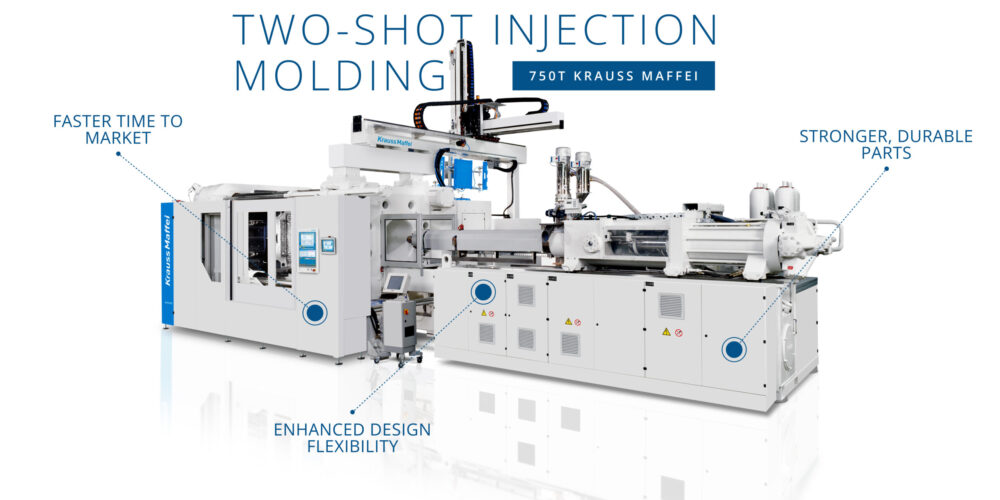A new wave of tariffs is reshaping how American manufacturers think…

Injection Molding for Electronics: Everything You Need to Know
Is Injection Molding Right for Your Electronics Application?
As devices get smaller and more integrated into our daily lives, the manufacturing processes behind them are evolving quickly. Injection molding for electronics is at the forefront of this revolution, merging the precision of traditional plastic molding with the complexity of electronic components. Whether you’re an industry professional, curious tech enthusiast, or an entrepreneur exploring new manufacturing possibilities, this guide will help you understand how injection molding can help you reach your goals. Let’s dive in.
What is Injection Molding?
Injection molding is one of the fastest ways to create tight-tolerance parts for a range of industries. The manufacturer will create a mold for a product, which is typically made out of steel, aluminum, or beryllium-copper alloy. Once that mold has been made, it’s mounted on an injection molding machine. This machine heats a plastic polymer and shoots the melted material into the mold. The polymer then fills the entirety of the mold, and is left to cool. Once it’s removed from the mold, you have a part that’s ready for secondary operations.
“Secondary operations” basically refers to any other processing that needs to happen before the product can be considered finished. This might include assembly, pad printing, labeling, engraving, and more. Once it’s gone through the secondary process, it’s ready to be sent to its final destination.
What Materials are Used in Injection Molding Electronics?
For electronics injection molding, there are a few common plastic varieties. This might include ABS, polycarbonate, and polyamides like nylon. These materials are specifically chosen because of their electrical properties, durability, heat resistance, and ability to meet specific requirements of electronic components.
What Electronic Components are Created Using Injection Molding?
Injection molding is crucial for high-volume production and consistent quality. With this process, you can create thousands of parts quickly, even if they have complex shapes and geometries. Some of the most common injection-molded electronic components include:
- Connectors and housing: Used to join electrical circuits or contain electrical components.
- Electrical outlet covers and switch plates: Decorative and protective coverings for electrical outlets and light switches.
- Conduit fittings: Used to connect or terminate an electrical conduit.
- Wire and cable spools: Used to store and dispense electrical wiring.
- Button and keypads: You may see keyboard buttons and other similar products created through injection molding.
- Dashboard switches and knobs: This is most common in automotive applications, those there are other uses.
- Cable ties: You may create cable ties to organize and secure bundles of wires or cables.
Work with Deluxe Plastics for Your Injection Molding Electronics Needs
If you’re looking for injection molding electronics support, turn to the experts at Deluxe Plastics. Founded in 1928, we’re a family-owned business focused on innovation, quality, and remarkable customer service. When you work with us, you get access to a team of experts who are dedicated to your success. We’ll get to know your needs, matching you with the perfect solution and getting you to market quickly.
At Deluxe Plastics, we can handle everything from the initial design to the final shipment. And we do it all with sustainability in mind. What’s more, we maintain an ISO 9001:2015 certification to ensure we’re delivering the highest quality products to our customers.
Let’s Get Started
Want to learn more about what we can do for you? Reach out to our team for an initial consultation.



